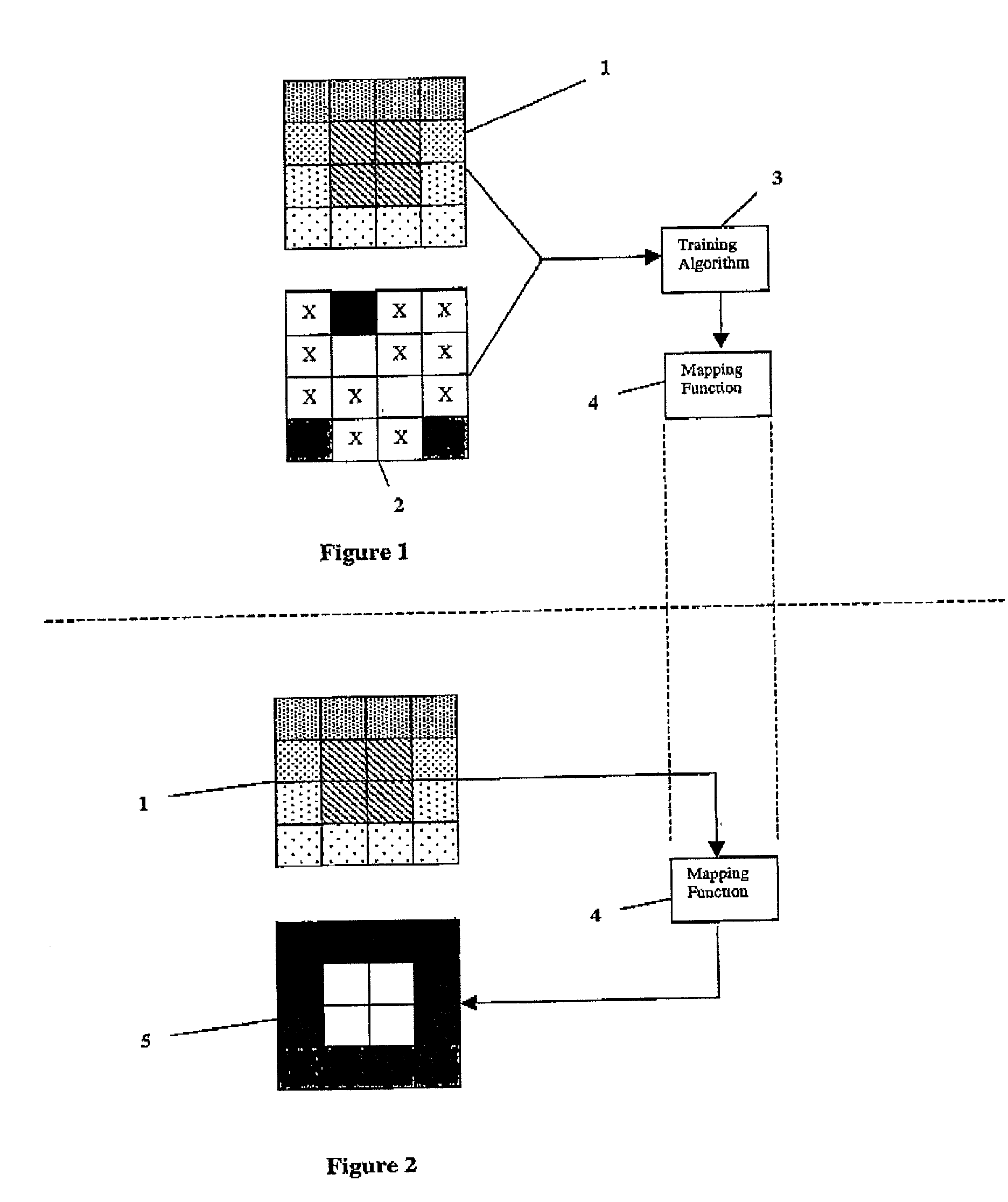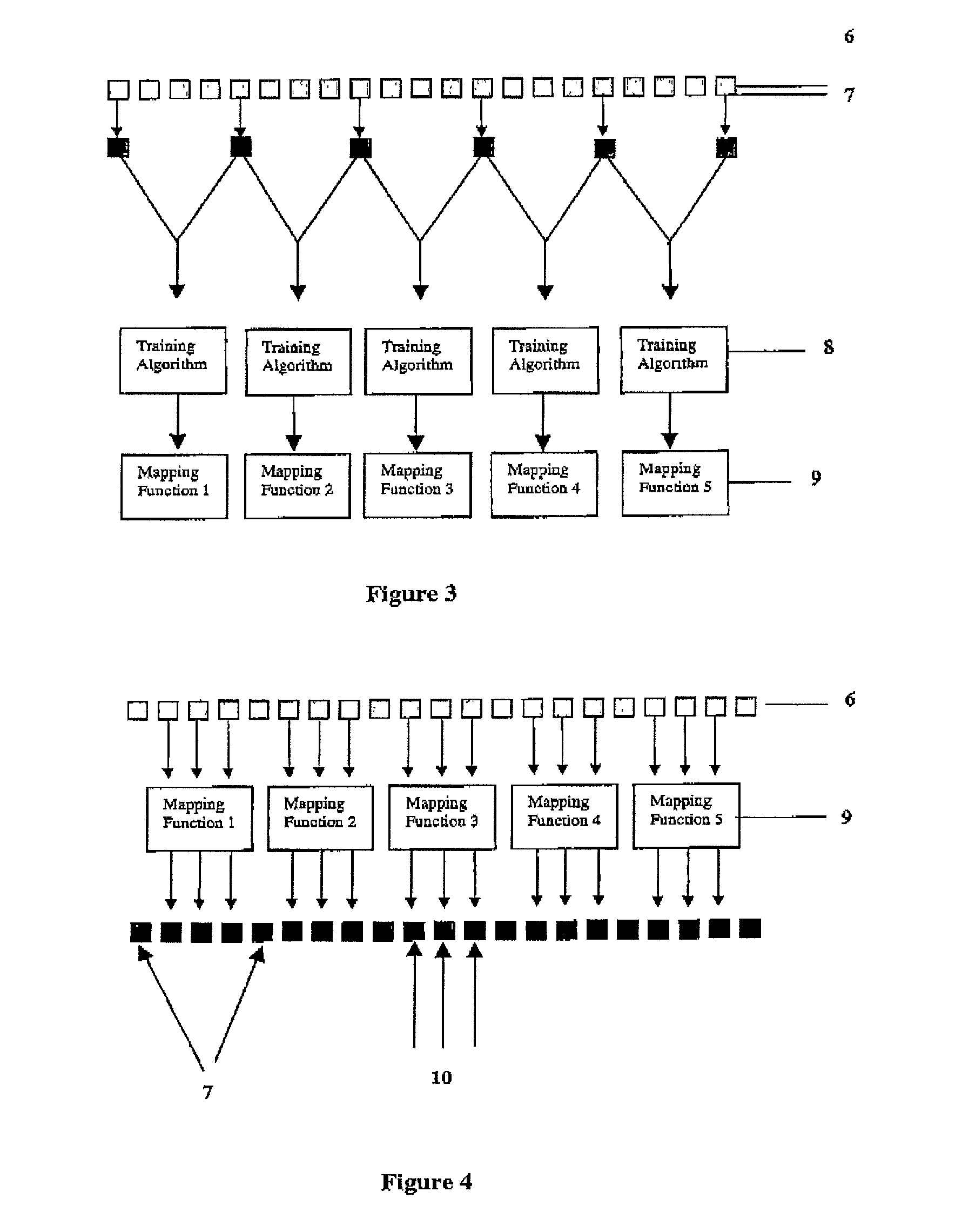Image conversion and encoding techniques
a technology of encoding and conversion, applied in the field of image conversion and encoding techniques, can solve the problems of slow process, time-consuming and costly, slow, tedious, time-consuming and expensive process, etc., and achieve the effect of reducing the number of frames, reducing the time commitment of operators, and acceptable results
- Summary
- Abstract
- Description
- Claims
- Application Information
AI Technical Summary
Benefits of technology
Problems solved by technology
Method used
Image
Examples
Embodiment Construction
[0145] For each pixel in the frame to be depth mapped the image characteristics of the target pixel are used to determine the depth associated with the said pixel. In the preferred embodiment two depth estimates are retrieved, one from each key frame. This process is illustrated in FIG. 7, which shows how a target pixel 11 is compared to the closest source key frame 6 before and after the current frame in the image sequence (step 12 and 13). The learning process, similar to that described previously uses a search radius 14 to identify pixels with similar image characteristics and uses the depth associated with the said pixels (step 15 and 16) to calculate a depth for the target pixel (step 17 and 18). Each key frame generates an estimate of the target pixel's depth, which we will define as D1 and D2.
[0146] To determine a final depth associated with the target pixel the depths D1 and D2 must be combined. In the preferred embodiment a weighted average of these values is calculated usi...
PUM
 Login to View More
Login to View More Abstract
Description
Claims
Application Information
 Login to View More
Login to View More - R&D
- Intellectual Property
- Life Sciences
- Materials
- Tech Scout
- Unparalleled Data Quality
- Higher Quality Content
- 60% Fewer Hallucinations
Browse by: Latest US Patents, China's latest patents, Technical Efficacy Thesaurus, Application Domain, Technology Topic, Popular Technical Reports.
© 2025 PatSnap. All rights reserved.Legal|Privacy policy|Modern Slavery Act Transparency Statement|Sitemap|About US| Contact US: help@patsnap.com



